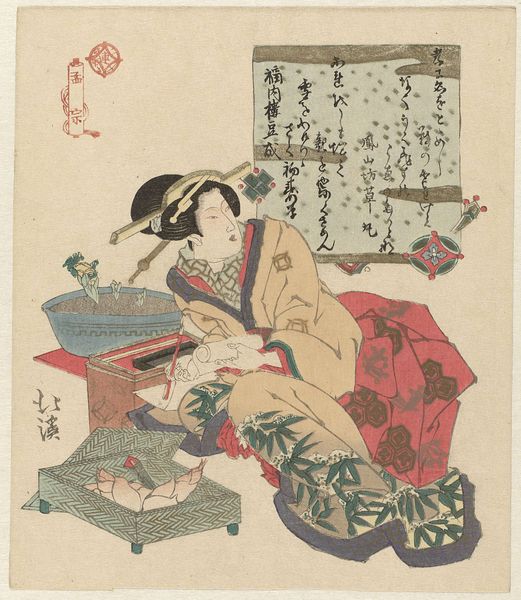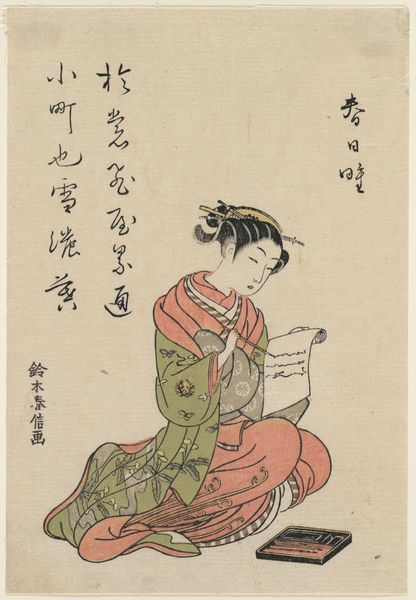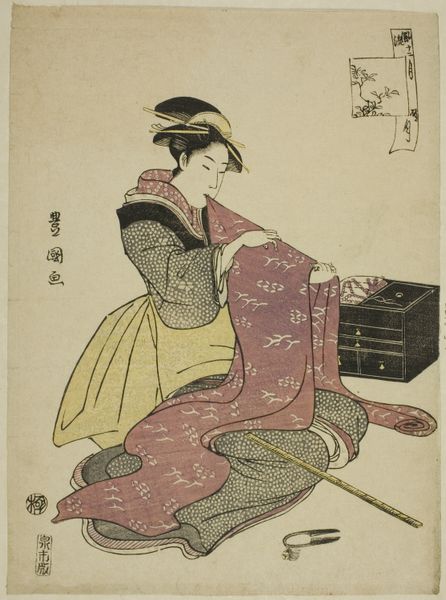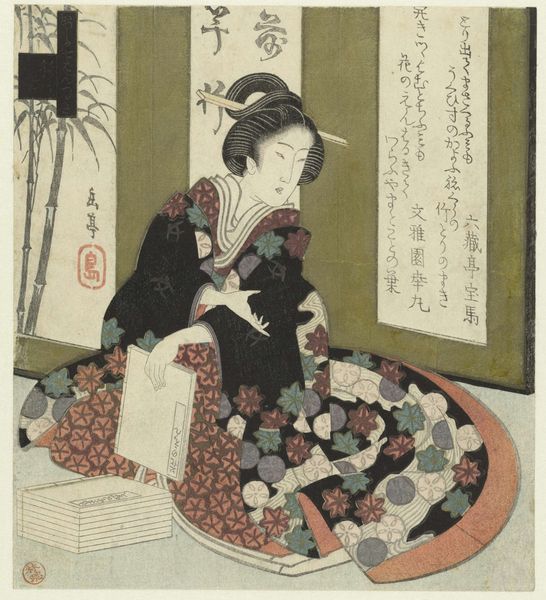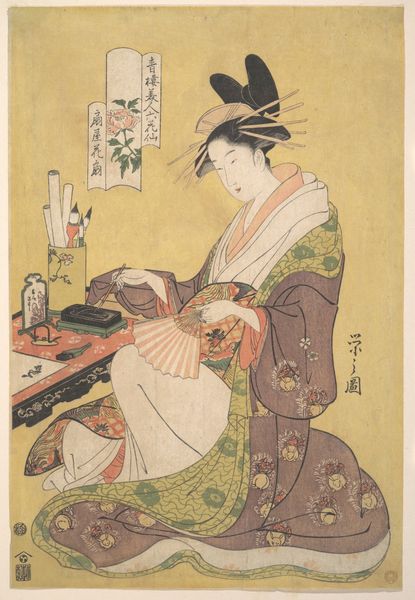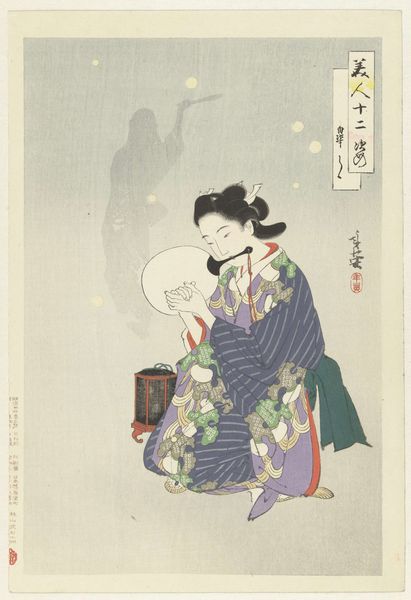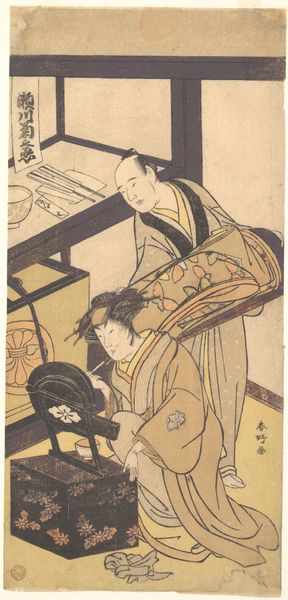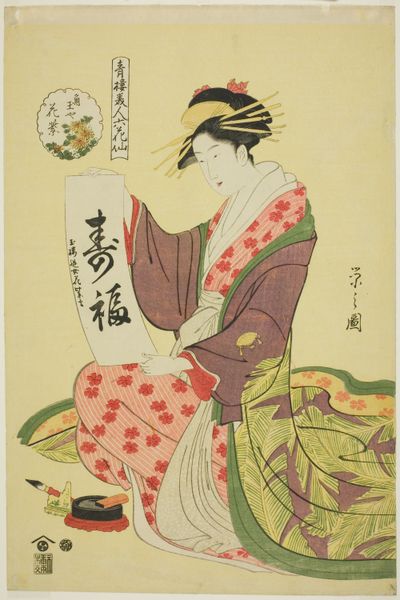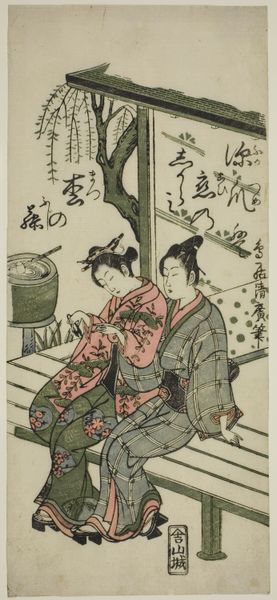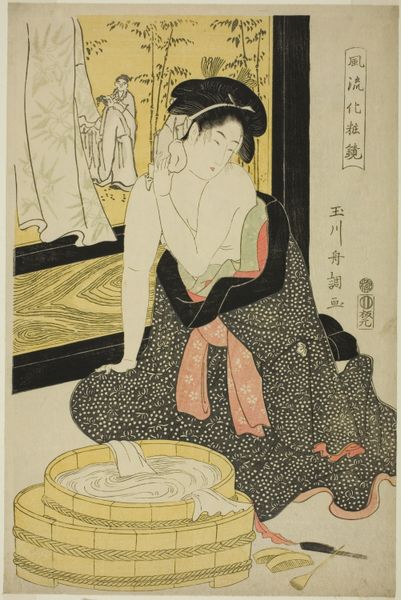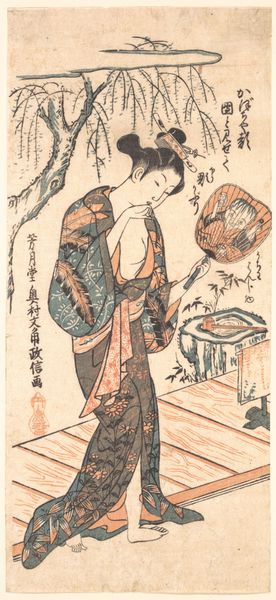
print, woodblock-print
# print
#
asian-art
#
ukiyo-e
#
figuration
#
woodblock-print
#
genre-painting
Dimensions: height 310 mm, width 151 mm
Copyright: Rijks Museum: Open Domain
Editor: So, here we have Okumura Toshinobu's "Woman with a Hand Mirror," a woodblock print from around 1730. It feels like such an intimate scene, yet somehow distant. What stands out to you? Curator: I notice how the mirror acts as a symbolic boundary. A woman gazing into her own reflection...it's such a loaded image throughout art history. In the ukiyo-e tradition, though, it is particularly linked to representations of the fleeting nature of beauty. Do you see how the artist uses the subtle tilt of her head and the slight downturn of her eyes to convey a sense of melancholic self-awareness? Editor: Yes, I hadn’t thought about it that way. Is the hand mirror symbolic of her self-reflection or a symbol for vanity, something negative? Curator: Both! The beauty ideals of the Edo period placed great value on flawless, doll-like features. The mirror becomes both a tool of beautification, and a tool of awareness of your lack of the ideal. How might we think of this in our contemporary lens of media’s obsession with physical ideals? Editor: I see! And the way the print captures such detail, it's amazing for the time. It does bring to mind the self-scrutiny women still experience today, centuries later. Thank you, I can understand the symbolic complexity so much better now. Curator: It’s that ongoing dialogue between cultural memory and individual experience that makes these images so powerful, don’t you think?
Comments
No comments
Be the first to comment and join the conversation on the ultimate creative platform.
